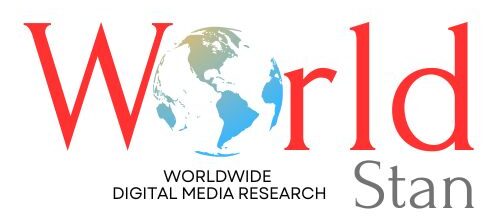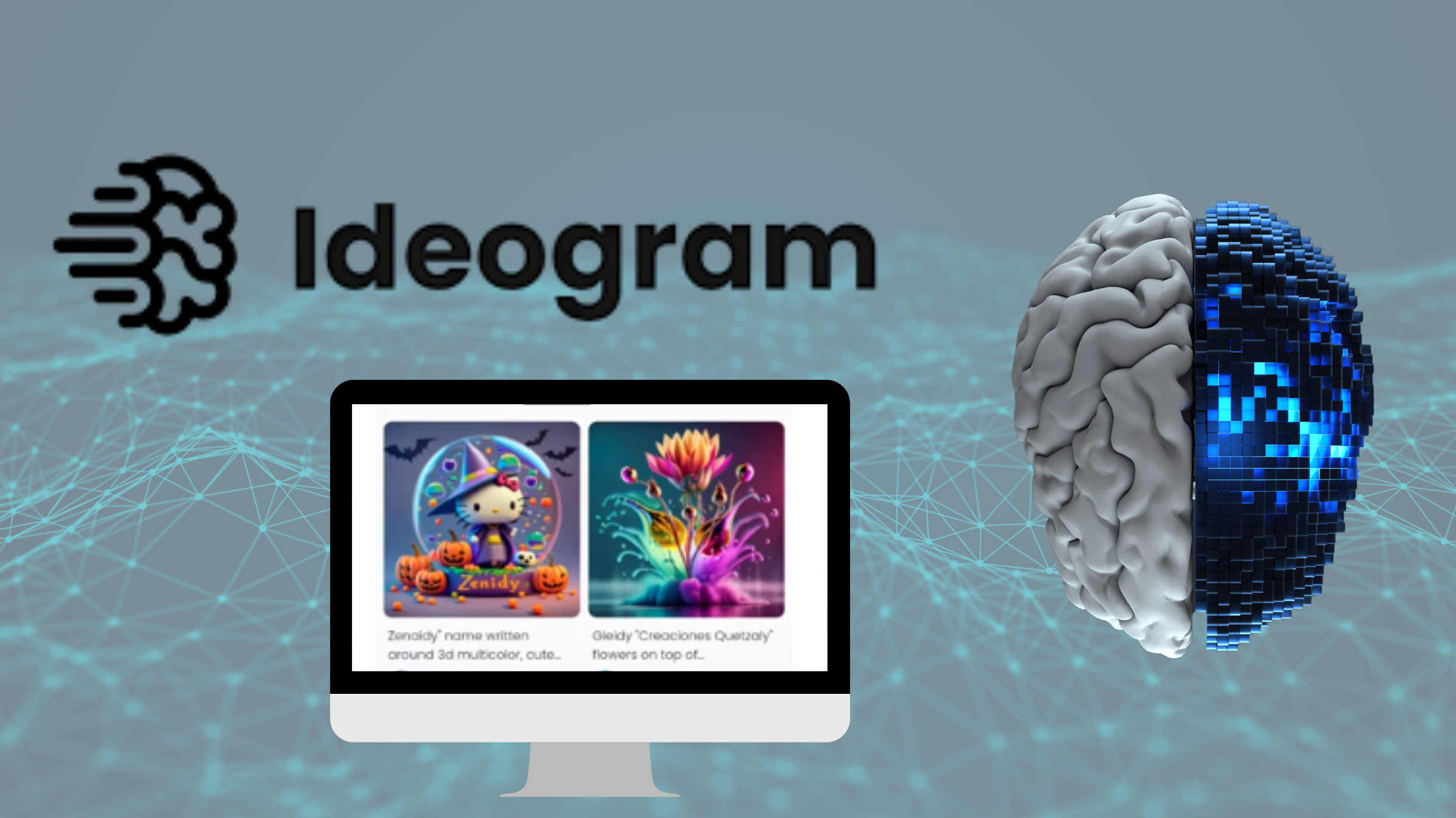This article examines the evolution of Ideogram AI, a pioneering text-to-image generation platform that merges artificial intelligence with creative design, exploring its history, key model updates, features, and growing impact on digital art and visual communication.
Introduction:
Ideogram AI, developed by Ideogram, Inc., represents one of the most significant advancements in generative AI technology. Designed as a freemium text-to-image model, it harnesses deep learning methodologies to create high-quality digital images from natural language descriptions known as prompts. What sets Ideogram apart from other AI image generators is its exceptional ability to generate legible and stylistically accurate text within images—a challenge that has long limited similar tools like DALL-E, Stable Diffusion, and Midjourney. With each version, Ideogram AI continues to redefine the boundaries of AI-driven creativity, offering new opportunities for designers, advertisers, and digital artists worldwide.
Origins and Early Development
Ideogram, Inc. was established in 2022 by a group of leading AI researchers and innovators: Mohammad Norouzi, William Chan, Chitwan Saharia, and Jonathan Ho. These founders, known for their prior work in machine learning and image synthesis, set out to create a model capable of producing precise and contextually relevant visuals with readable embedded text. Their shared vision was to overcome one of the persistent weaknesses in existing AI image generation tools—handling textual content within images.
The company’s mission quickly attracted attention from global investors, and by August 2023, Ideogram had released its initial version, known as Ideogram 0.1. This release followed a successful seed funding round that raised $16.5 million, led by major venture capital firms Andreessen Horowitz and Index Ventures. The early model impressed users with its creative flexibility and text-handling ability, positioning Ideogram as a strong competitor in the rapidly growing generative AI industry.
Growth and Advancements
Building upon the success of its early release, Ideogram continued to improve its algorithms, data architecture, and rendering precision. In February 2024, the company launched its 1.0 model alongside an $80 million funding round, marking a major milestone in its growth. This version brought a significant boost in image clarity, text generation accuracy, and style control, making it particularly appealing for marketing, advertising, and design professionals who require both creativity and accuracy in visuals.
During the summer of 2024, Ideogram welcomed Aidan Gomar to its team, further strengthening its leadership and research capacity. By August 2024, Ideogram introduced the 2.0 model, which expanded its stylistic versatility by including multiple rendering modes such as realistic, 3D, design, and anime. This update also improved text generation quality, allowing users to produce intricate logos, posters, and social media graphics where typography played a central role.
The 2a and 3.0 Model Breakthroughs
In February 2025, Ideogram unveiled the 2a model, a version specifically optimized for speed and efficiency in professional environments like graphic design and photography. This release focused on reducing latency, improving output consistency, and catering to designers who need rapid iterations without compromising on quality.
Just a month later, in March 2025, the company announced its most advanced release to date—the Ideogram 3.0 model. This version introduced enhanced realism, more accurate texture rendering, and a deeper understanding of complex text layouts. While it continued to face limitations in creating ambigrams and mirrored text, it was widely recognized as one of the most capable AI image generation models on the market.
Distinctive Features and Capabilities
What distinguishes Ideogram AI from other generative AI tools is its focus on text comprehension and integration within images. Most AI image generators, such as Midjourney, DALL-E, Stable Diffusion, and Adobe Firefly, have historically struggled to render readable text elements. Ideogram’s architecture overcomes this barrier by combining advanced language modeling with visual pattern recognition.
Among its most praised features are:
- Accurate Text Rendering: Ideogram generates legible and stylistically cohesive text, making it ideal for use in branding, advertising, and content creation.
- Multimodal Style Support: The platform supports multiple creative modes such as realistic, 3D, anime, and design aesthetics.
- Prompt Precision: Its refined prompt interpretation allows users to describe complex visual concepts and textual arrangements with high accuracy.
- Optimized Performance: The 2a model introduced faster rendering times and better adaptability for graphic design workflows.
- Realism and Detail: The 3.0 model enhances image depth, texture realism, and contextual understanding, improving overall visual coherence.
These advancements have positioned Ideogram AI as a preferred tool among professionals seeking efficient, AI-powered design capabilities.
Ideogram and the AI Art Industry
The launch and evolution of Ideogram coincide with the ongoing expansion of the AI art industry. With platforms like DALL-E, Midjourney, Stable Diffusion, and Google Imagen leading innovation in text-to-image generation, Ideogram has carved a unique niche by excelling at text synthesis within visuals—a key demand in modern advertising and digital design.
Generative AI tools are now widely used in marketing, film production, architecture, and content creation. Ideogram AI contributes to this ecosystem by empowering creators to turn detailed written ideas into visually compelling imagery without technical design skills. Its text precision makes it particularly valuable for logo design, brand campaigns, and social media assets that require both artistic and linguistic accuracy.
Challenges and Ethical Considerations
Like other major players in the AI image generation field, Ideogram faces questions surrounding AI bias, copyright protection, and ethical usage. The company has emphasized transparency and responsible innovation, implementing guidelines to prevent misuse and ensuring that user-generated content aligns with legal and creative standards.
AI models are often trained on massive datasets sourced from the internet, which can raise concerns about intellectual property and the inclusion of copyrighted material. In the broader context, competitors like Midjourney and Stability AI have already faced lawsuits over copyright infringement. As Ideogram continues to grow, it will likely face similar scrutiny, prompting discussions about fair use, data sourcing, and artist consent in the AI art industry.
The company’s developers have also focused on minimizing representational bias within its model outputs. Generative AI tools are known to sometimes produce skewed results when depicting gender, ethnicity, or culture. Ideogram’s research teams are actively working to address these issues through dataset refinement and ethical model training frameworks.
The Role of Ideogram in the Creative Ecosystem
Ideogram AI’s influence extends far beyond simple image generation. It represents a shift in how creativity is perceived and executed in the digital age. By bridging the gap between human imagination and machine interpretation, it enables professionals and amateurs alike to visualize complex ideas instantly.
The platform is increasingly integrated into creative workflows across industries such as:
- Graphic Design: Ideogram allows rapid creation of marketing materials, posters, and brand visuals.
- Advertising: Its high-quality text rendering is ideal for promotional content and social media advertising.
- Film and Media Production: Storyboard artists and concept designers use it to prototype visual ideas quickly.
- Education and Research: Educators use Ideogram AI to demonstrate visual storytelling, AI ethics, and computational creativity.
This democratization of design has reshaped creative industries, making professional-grade visuals accessible to everyone, regardless of artistic skill level.
Comparisons with Other AI Image Generators
When compared to other leading AI image generation platforms, Ideogram consistently stands out for its accuracy in handling textual elements and structured layouts.
- Ideogram vs Midjourney: While Midjourney excels in artistic and cinematic styles, Ideogram provides more accurate and legible text output suitable for commercial use.
- Ideogram vs DALL-E: DALL-E focuses on versatility and compositional creativity, whereas Ideogram emphasizes typography and graphic design precision.
- Ideogram vs Stable Diffusion: Stable Diffusion offers open-source flexibility, but Ideogram delivers higher coherence in text and branded content generation.
- Ideogram vs Adobe Firefly and Google Imagen: These enterprise-oriented tools integrate with design ecosystems, yet Ideogram’s unique text-to-image specialization continues to attract creative professionals seeking focused control over typographic and layout-based design.
The Future of Ideogram AI
As of 2025, Ideogram continues to advance rapidly in its research and development efforts. With each model release, the company refines its neural architecture, expands its stylistic range, and strengthens its position in the generative AI industry. The upcoming versions are expected to integrate more multimodal capabilities, combining text, image, and video synthesis into a single creative framework.
The company’s ongoing commitment to responsible innovation and user-centric design ensures that Ideogram AI will remain a major contributor to the evolution of AI-driven creativity. Future updates may include greater control over image composition, enhanced realism, and possibly the introduction of collaborative tools for team-based design environments.
Conclusion
Ideogram AI stands at the forefront of the AI art revolution, bridging language and imagery with precision and creativity. From its early versions to the advanced Ideogram 3.0 model, the platform has consistently redefined what’s possible in text-to-image generation. Its powerful features, such as accurate text rendering, multiple style modes, and prompt comprehension, have made it a cornerstone for creators and businesses alike.
As the demand for AI-generated art, design, and visual storytelling continues to grow, Ideogram’s dedication to technological refinement and ethical development positions it as a key innovator in the generative AI landscape. Whether used for advertising, design, or content creation, Ideogram AI demonstrates the remarkable potential of artificial intelligence to empower imagination and transform visual communication in the digital era.

